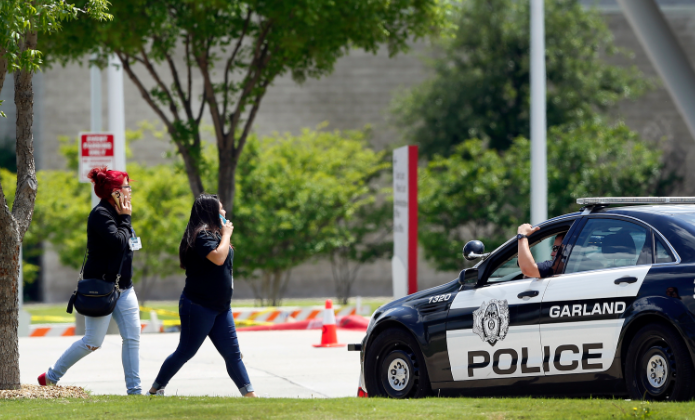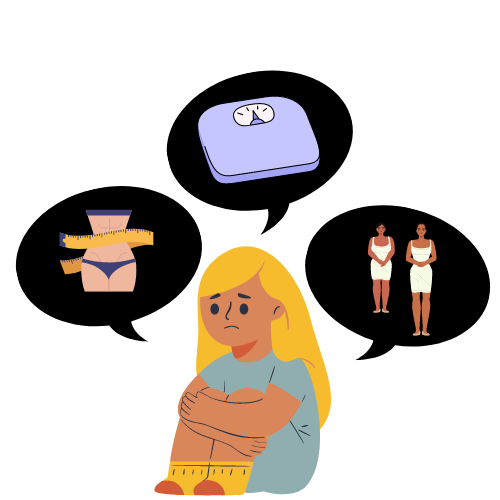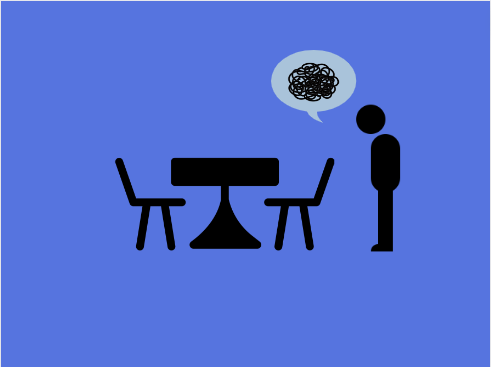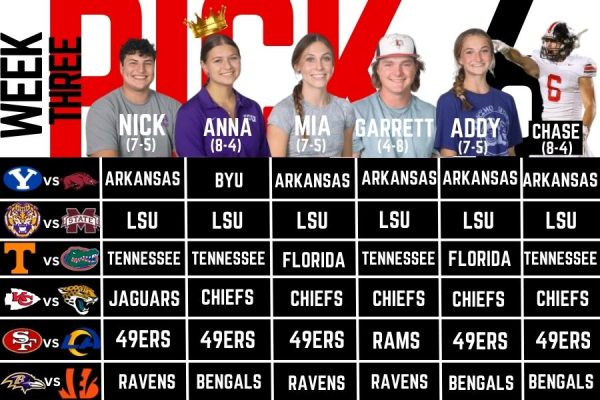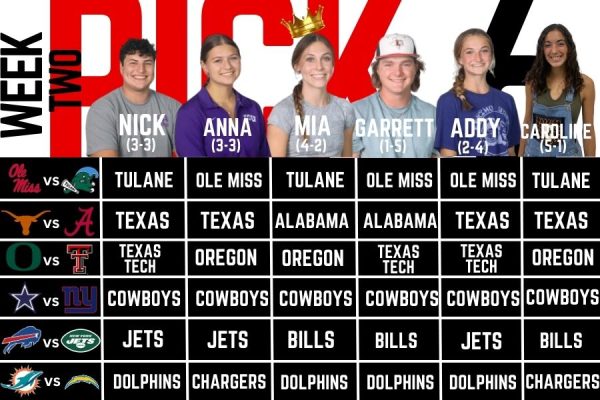Terrorism becomes a local issue
Tom Fox/Dallas Morning News/TNS
A Garland police officer directs Naaman Forest High School students around the crime scene outside the Curtis Culwell Center on Monday, May 4, 2015, the day after two gunmen armed with assault rifles and wearing body armor opened fire on an unarmed Garland ISD security guard in Garland, Texas, Sunday night. After seeing what happened, a Garland police officer shot and killed the two suspects.
May 14, 2015
Perhaps nothing in this century has caused a greater immediate sociopolitical impact on the world than terrorism. From encompassing security legislation such as the Patriot Act to social responses such as a stereotypical association of all Muslims as terrorists, the increased American awareness of terrorism in a globalized world, especially the September 11 attacks, has had impacts wide-ranging in their effects.
Part of what made this happen is the concept of fear. One of the objectives of the terrorist attacks is to make Americans feel afraid within their own countries and inspire a belief that their nation could not protect them. This is a common goal with terrorist-associated attacks, and it has continued into the present day with the recent shooting at the Curtis Culwell Center in Garland.
The shooting took place during an event hosted by the American Freedom Defense Initiative (AFDI), a conservative group owned by the activist Pamela Geller. The two suspects in the attack, Elton Simpson (who has been under surveillance since 2006) and Nadir Soofi, were both killed outside by local police after they opened fire and injured a security guard. After the attack, Islamic State took responsibility, claiming that “soldiers of the caliphate” performed it, making it the first time that ISIS has taken responsibility for an attack in the US.
The AFDI is a group that already made controversial news when it bought advertisements on New York City buses that refer to Islamic extremists murdering Jews for worship and is known for its Stop Islamization of America campaign.The conference featured the Dutch politician Geert Wilders as its keynote speaker, who is known for taking anti-Islamic stances in Western societies. Also, in a development similar to what happened with the French magazine Charlie Hebdo before it was attacked, the event featured a contest for drawing the Prophet Muhammad, the depiction of whom is against the beliefs and offensive to many Muslims.
If ISIS actually did orchestrate or influence the attack, then it is an extremist response of violence to the ADFI, an organization that is admittedly considered by many to be an Islamic hate group. But it also reflects on ISIS attempts to extend its shadow of fear, for they attempted with this attack to show Westerners that they are not safe even in their part of the world. In this, the attack did show that terrorism can still happen in the West, but the attack itself also, in many ways, failed because the only casualties were the two gunmen.
However, the whole series of events also highlights a problem with what causes these social divides in the first place. The ADFI, to some extent, fired first with its campaigns and attacks on people in Islam as a whole, referring indiscriminately to all Muslims as part of the global jihad and fighting, through its Stop Islamization campaign, against the rights of Muslims to be in the country. They didn’t shoot anybody, but they still declared cultural war and widened divides through their images of Westerners and Muslims. Cultural conflict occurs when people focus on overgeneralizations and differences as reasons for opposition. Even people who are not part of the groups actually attacking people still have an impact, and the influence of their viewpoints still matters for the future of interconnected groups in a globalized world.
This cultural divide driving attacks on people according to their ethnicity, race, or religion is responsible for much of the conflict between sectors with different cultural values. If groups are to truly be able to live in peace within each other, they must also learn to criticize without offending. There is a difference between arguing against something that some members of a group do and condemning all members of it as irredeemably evil. In order to limit attacks like this, both sides need to stop encouraging viewpoints of permanent division that feed into extremism.



